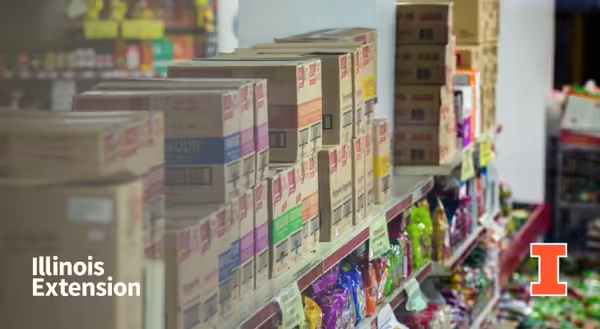
There are many things to be thankful for this time of year, and one of them is having enough food to nourish our bodies and fill our appetites. However, the harsh reality is that nearly 20 million U.S. adults reported that in the last seven days, their household sometimes or often didn’t have enough to eat, and for those with children, nearly one in eight adults lacked sufficient food to feed their household. (Household Pulse Survey, September-October 2021).
Support your local food bank and food pantry by donating food, money or volunteering your time
Many rely on food pantries to provide safe and healthy food, but these food pantries and food banks must rely on the community to keep their doors open. A food pantry is an individual site that distributes food and items directly to those in need, while a food bank is a non-profit organization that distributes food to agencies, such as food pantries and soup kitchens. Hosting a food drive is a great way to get your company or organization involved in supporting local food banks or food pantries; contact the food bank or food pantry first to ask if there is a list of preferred items. Don’t just clean out your own pantry by grabbing unpopular foods that have been sitting on the shelves for months; shop specifically for food donations and look for nutritious food. Purchase shelf-stable fruits packed in 100% juice, low-sodium canned vegetables, beans and lentils, canned tuna or chicken, nuts and peanut butter, shelf-stable milk or milk powders, and whole grains, such as oats, brown rice, 100% whole grain pasta and bread. Never donate opened or damaged food or home-canned food and avoid donating food past its “best by”, “use by”, or “sell by” dates. More than just food is accepted and needed at food pantries; diapers, cleaning supplies, paper products, and personal hygiene products are usually in high demand.
A monetary donation to a food bank may be better than purchasing food yourself. Many food banks purchase foods at discounted prices, meaning they’ll get more for the dollar than what you and I would get. Plus, they’re able to purchase exactly what their clients need. In addition to food or financial donations, food banks and pantries need your time, as they rely heavily on volunteers. To find a food bank or food pantry in your community, visit the Find Food IL map. No matter how you give to your local food pantry and food bank, you’ll be helping your neighbor access enough wholesome food to adequately feed themselves and their families.
Sources:
Center on Budget and Policy Priorities, Census Bureau’s Household Pulse Survey, 2021
Ann Hamilton, University of New Hampshire Extension, “8 Tips for Donating Food to Food Banks and Pantries”
Feeding America, “What is the Difference between a Food Bank and a Food Pantry?”
PHOTO CREDIT: Photo by iMattSmart on Unsplash
ABOUT THE AUTHOR: Jenna Smith is a Nutrition and Wellness Educator with University of Illinois Extension, serving Livingston, McLean, and Woodford Counties. Smith uses her experience as a registered dietitian nutritionist to deliver impactful information and cutting-edge programs to Livingston, McLean, and Woodford Counties and beyond.